Here Comes the Change
Like many other people, I’d like to party all week when Barack Obama is sworn in as president. But this isn’t the year for it, not with unemployment rising and fear spreading through the land.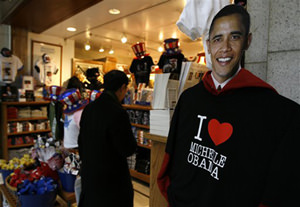
Like many other people, I’d like to party all week when Barack Obama is sworn in as president. But this isn’t the year for it, not with unemployment rising and fear spreading through the land.
As marvelous as the event promises to be—it will be an unforgettable chapter in American history—the inauguration does not call for unbridled celebration. In a sense, it resembles another grim period, worse than our own, when Franklin D. Roosevelt was inaugurated in March 1933 during the Great Depression. This is how The New York Times’ Arthur Krock described that scene:
“Though the city was gay with flags and lively with the music of bands and cheers for the marchers in the inaugural parade which followed the oath taking, the atmosphere which surrounded the change of government in the United States was comparable to that which might be found in a beleaguered capital in war time.”
A beleaguered capital in wartime. That’s how today’s Washington, D.C., strikes me as I view the preparations from almost 3,000 miles away in California, where the unemployment rate, the third highest in the nation, exceeds 8 percent; it’s almost 10 percent in the Los Angeles area. State assistance centers and Web sites in California, New York, Ohio, Michigan, Missouri, Colorado, Kentucky and North Carolina have been overwhelmed with requests for help in obtaining unemployment insurance, USA Today reported.
With that kind of news, Obama’s most important task is to put people back to work, with the inaugural an enjoyable and hopefully inspiring interlude between grinding sessions on the recovery plan.
The Obama team is digging into the crisis and is doing it in a comparatively open manner, a sharp contrast to the opaque way Treasury Secretary Hank Paulson has handled TARP, the Troubled Asset Relief Program. Obama will no doubt tell the public exactly how the financial institutions are using the money and, in the words of the TARP congressional oversight panel, answer the big question about the program: “how the infusion of billions of dollars to an insurance conglomerate or a credit card company” helps “homeowners threatened by foreclosure, people losing jobs and families unable to pay credit cards.”
Those are among the people to be helped by Obama’s relief program, called the American Recovery and Investment Plan, an innocuous name designed not to alarm anybody. It would be an amazing feat to avoid alarm, considering the plan will cost $775 billion and probably more.
Christina Romer, who will head Obama’s Council of Economic Advisers, and Jared Bernstein, Vice President-elect Joe Biden’s top economist, provided an idea of what will be in the plan in a report released by Obama last week. It envisioned creation of more than 3.5 million jobs, 90 percent of them in the private sector.
What was impressive about the report, pointing up the huge change between George W. Bush and Obama, is the idea of immediate and big help to the poor, with increases in food stamps and expansion of unemployment insurance. After a campaign in which the rhetoric of both sides was aimed at the middle class, it’s good to know the Obama team won’t forget the poor folks the next president once worked among as a Chicago community organizer. In addition, direct aid to the states would help the low-income by permitting continuation and expansion of programs such as Medicaid’s health benefits for the poor.
The report proposed creating jobs in the energy field, infrastructure construction and repair, health care and education. More jobs would come from tax cuts for 150 million workers and reducing business taxes.
The tax cuts, especially those for business, will be the most controversial part of the plan. The business reductions appear to be designed more to win Republican support in Congress than to provide immediate help to those who need it. As Paul Krugman wrote in The New York Times, “money not squandered on ineffective tax cuts could be used to provide further relief to Americans in distress,” with even more going to unemployment benefits and Medicaid.
What’s most important is that this recovery plan be really big. We can’t be afraid of the cost.
That point was made in a report by the Center for American Progress, “Pumping Life Into the Economy,” written by Scott Lilly, a senior fellow at the center and a congressional staff veteran of 31 years who has held major fiscal positions.
Lilly wrote: “The U.S. economy is currently estimated to be about $14.5 trillion, which means the $5.8 trillion public debt equals about 40 percent of gross domestic product. That is actually much lower than it was in the early 1950s—and much lower than the debt held by most other economically developed countries.”
He also noted that President Roosevelt opposed deficits during the Depression. Lilly said that “while he generated a host of new approaches to dealing with the economic policy, his deficit policy did not deviate significantly from Hoover’s tightfistedness.”
The Depression didn’t really end until the nation began preparing for World War II. Hopefully, Obama is taking note of the history. With so many out of work and with unemployment rising, this is no time for tightfistedness or excessive caution.
Your support matters…Independent journalism is under threat and overshadowed by heavily funded mainstream media.
You can help level the playing field. Become a member.
Your tax-deductible contribution keeps us digging beneath the headlines to give you thought-provoking, investigative reporting and analysis that unearths what's really happening- without compromise.
Give today to support our courageous, independent journalists.
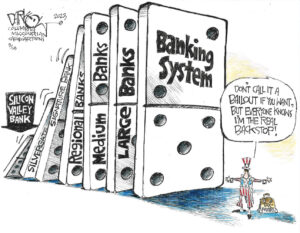
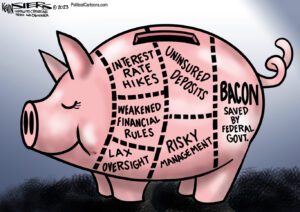
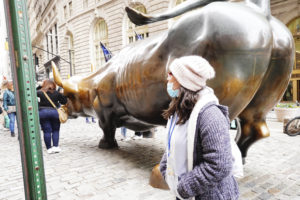
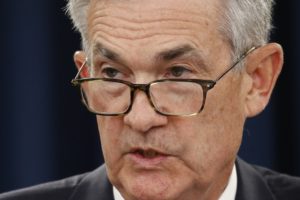
You need to be a supporter to comment.
There are currently no responses to this article.
Be the first to respond.